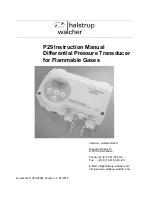
TIMTER™ Multi
-mode Dual
Telemetry Transmitter
33
Quasonix, Inc.
Quasonix Multi-Mode Digital Transmitter
Customer Part # = QSX-xxx-xx-
xx…
Customer Name = Quasonix Customer
Contract # = 999999-9
TX Serial # = 1001
Hardware Rev: A
PA Rev: F
PA Serial #: 1001
PA Model #: XMTR-PAM-10-F-SCPA
IRIG 106-09
6025 Schumacher Park Drive
West Chester, OH 45069
(513) 942-1287
www.Quasonix.com
CAGE CODE: 3CJA9
FPGA HW Type: T4D
FPGA version: 001h 02ah
FPGA Buld: 0x5B6C5E7C = Aug 9 2018 15:32:12
Firmware version: T4 V1.131 8/9/2018
Preset 0 read
SOQPSK>HVA table not valid for any band.
DL table not valid for any band.
Ready for Commands
SOQPSK>RF on/off pin changed from 0 to 1
SOQPSK>BB clock rate out of limits (clk = 0 kHz)
SOQPSK>
Figure 30
: TIMTER™ Welcome Message
Note:
The standard Dual Transmitter software, displays the current mode as shown in Figure 30. In this example,
SOQPSK>. If the Dual Transmitter has the CP07 option, the current channel displays rather than the mode, such as
2> for Channel 2.
4.2.1
Frequency Notes
•
Channel 1 and Channel 2 can use the same source data and frequency.
•
Frequency control is available only via the serial port in the 2 x 3 inch dual transmitter. The 4 x 3 dual
transmitter also supports the new 2
nd
Generation Switch Box for setting frequency and mode.
4.2.2
2
nd
Generation Switch Box Notes
If a Quasonix 2
nd
Generation Digital Switch Box is attached to the dual transmitter, and the digital switch box option
is present (check the part/model number of the transmitter for DSWBX), all changes made to mode, frequency, or
LDPC selections on the dual transmitter are also updated immediately on the Switch Box. This ensures the switch
box settings always match those of the transmitter.
4.2.3
Command Set: Standard and Optional Commands
All standard and optional user commands in Table 12 consist of one or two alphabetic characters, followed by 0, 1,
or 2 arguments. If the command is issued with arguments, there must be a space after the alphabetic characters. The
commands are not case sensitive. A carriage return is required to initiate each command except for the single key
commands described at the beginning of the table.
Most parameters set by these commands are stored in the
unit’s nonvolatile flash memory (CS and DS are the
exception). On power-up, ALL settings are restored from preset 0, which is the default power on configuration. If
the parallel interface is active, then any applicable configuration settings are read from the parallel port and updated
















































